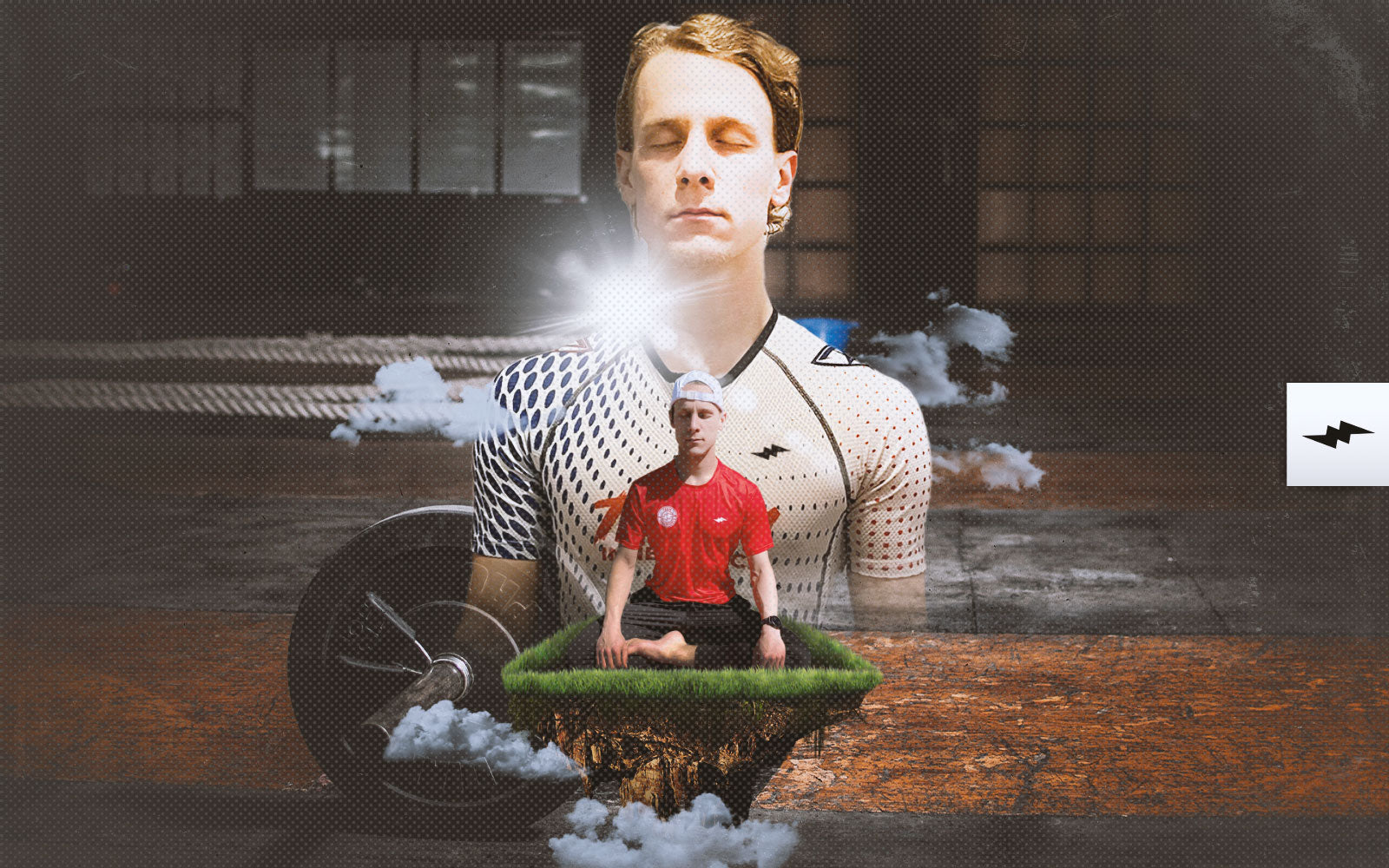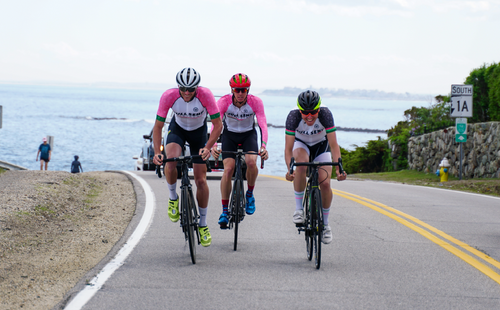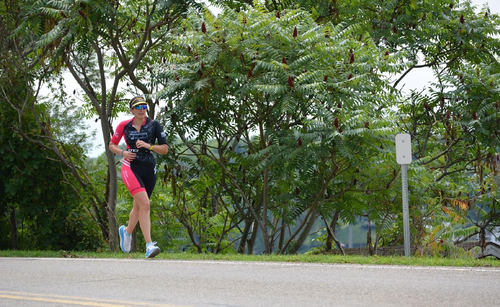Can Meditation Help Athletes Perform Better?

Ok, so meditation ‘isn’t your bag’ but stay with us. You won’t have to grow your hair, wear baggy pants and get a mandala tattooed on your neck; that’s a promise! From a rational point of view, we are constantly being reminded that endurance sports are all in the mind. Ironman great Mark Allen described winning in Kona as ‘a mental exercise in pain management’. In which case doesn’t it make sense to be training our minds for the mental challenge?
Meditative exercises are designed to increase focus and awareness of the self, and have been shown to reduce stress, increase endurance and may speed up recovery time for athletes through improved sleep.
What Is Meditation?
As humans, we tend to shun what we don’t understand but as scientific studies started to corroborate the claims of the meditation it moved further into mainstream practice. ‘Meditation’ is a term that covers many different activities, from body-scanning to Tai Chi, but what they all have in common is that they are mental exercises that aim to increase focus and awareness in order to enter a state of calmness and mental clarity.
Which Type Of Meditation Is For Me?

Most of us think of meditation as sitting cross-legged on the floor and being still. In fact, there are many forms of meditation which can cater to all of us.
Mindfulness Meditation – This is what commonly springs to mind when we hear the term ‘meditation’. It involves sitting quietly. When thoughts come into your mind you simply observe that they have come up and allow them to pass on, without engaging with them. You don’t need to be sat cross-legged on the floor for this, any comfortable spot will do.
Focused Meditation – ‘Just sitting’ can be exceptionally challenging for many of us. Focused meditation helps the mind from wandering too much by providing an external influence to act as a focal point. This might be counting your breaths, listening to a repetitive note, or staring at a candle. As you notice your mind engaging in the thoughts that come up, the external influence can act as a tool to bring you back to your practice.
Movement Meditation – For those of us that find it too difficult to sit still, there are plenty of options for movement meditation. Yoga, Tai Chi or Qigong are all types of meditation where movement plays a key role. Improved flexibility is a welcome bonus that comes with consistent yoga practice.
Progressive Relaxation – This is sometimes known as ‘body-scanning’ where you focus your mind on each muscle in your body in turn, running from head to toe and back again, tensing and relaxing each muscle as you go. This can be a great practice for those of us who struggle to get to sleep at night as it is designed to promote relaxation and reduce stress.
How Long Should I Meditate For?
There is an old Zen adage that says, ‘You should sit in meditation for 20 minutes every day -- unless you're too busy; then you should sit for an hour’.
You may find that, when you start, 20 minutes seems like an eternity but stick with it and be gentle to yourself. You are not going to be an expert straight away; the key is to be consistent.
Don’t expect results straight away. Like any type of training, give yourself time to adapt and commit to an 8-week program if you want to see if it works for you.
Why Is Meditation Good For Endurance Athletes?

The lead-up to any event can be a stressful time. Do you have all your kit with you? Is it all in working order? Do you have spare inner tubes? Is your nutrition on point? Have you trained enough…or too much? All these thoughts and more run through our minds, and the ability to be able to find a sense of calm will allow you to think more clearly and reduce bad decisions both leading up to, and during, an event.
Visualisation techniques have been shown to play a key role in pain management and endurance. It seems that you really can use mind over matter in order to push through when your body wants to quit on you. As endurance athletes we need to overcome long periods of discomfort, and visualisation is one way to help us deal with this.
Finally, good-quality sleep is essential to recovery. If you are training hard and then find that you cannot switch your mind off when it is time to sleep, then you are not allowing your body the rest it needs to repair. This can result in fatigue and injuries, and therefore time away from training.
Final Thoughts
The perception of meditation certainly keeps a lot of people away, but there are benefits to be had that can help us both on the track and in our daily lives. Finding new ways to manage stress and become more centred when the going gets tough is never a bad thing so why not give it a go and find your zen?
Written for Innerforce by Stewart Spiessens
Photos. @zachtacy

Ok, so meditation ‘isn’t your bag’ but stay with us. You won’t have to grow your hair, wear baggy pants and get a mandala tattooed on your neck; that’s a promise! From a rational point of view, we are constantly being reminded that endurance sports are all in the mind. Ironman great Mark Allen described winning in Kona as ‘a mental exercise in pain management’. In which case doesn’t it make sense to be training our minds for the mental challenge?
Meditative exercises are designed to increase focus and awareness of the self, and have been shown to reduce stress, increase endurance and may speed up recovery time for athletes through improved sleep.
What Is Meditation?
As humans, we tend to shun what we don’t understand but as scientific studies started to corroborate the claims of the meditation it moved further into mainstream practice. ‘Meditation’ is a term that covers many different activities, from body-scanning to Tai Chi, but what they all have in common is that they are mental exercises that aim to increase focus and awareness in order to enter a state of calmness and mental clarity.
Which Type Of Meditation Is For Me?

Most of us think of meditation as sitting cross-legged on the floor and being still. In fact, there are many forms of meditation which can cater to all of us.
Mindfulness Meditation – This is what commonly springs to mind when we hear the term ‘meditation’. It involves sitting quietly. When thoughts come into your mind you simply observe that they have come up and allow them to pass on, without engaging with them. You don’t need to be sat cross-legged on the floor for this, any comfortable spot will do.
Focused Meditation – ‘Just sitting’ can be exceptionally challenging for many of us. Focused meditation helps the mind from wandering too much by providing an external influence to act as a focal point. This might be counting your breaths, listening to a repetitive note, or staring at a candle. As you notice your mind engaging in the thoughts that come up, the external influence can act as a tool to bring you back to your practice.
Movement Meditation – For those of us that find it too difficult to sit still, there are plenty of options for movement meditation. Yoga, Tai Chi or Qigong are all types of meditation where movement plays a key role. Improved flexibility is a welcome bonus that comes with consistent yoga practice.
Progressive Relaxation – This is sometimes known as ‘body-scanning’ where you focus your mind on each muscle in your body in turn, running from head to toe and back again, tensing and relaxing each muscle as you go. This can be a great practice for those of us who struggle to get to sleep at night as it is designed to promote relaxation and reduce stress.
How Long Should I Meditate For?
There is an old Zen adage that says, ‘You should sit in meditation for 20 minutes every day -- unless you're too busy; then you should sit for an hour’.
You may find that, when you start, 20 minutes seems like an eternity but stick with it and be gentle to yourself. You are not going to be an expert straight away; the key is to be consistent.
Don’t expect results straight away. Like any type of training, give yourself time to adapt and commit to an 8-week program if you want to see if it works for you.
Why Is Meditation Good For Endurance Athletes?

The lead-up to any event can be a stressful time. Do you have all your kit with you? Is it all in working order? Do you have spare inner tubes? Is your nutrition on point? Have you trained enough…or too much? All these thoughts and more run through our minds, and the ability to be able to find a sense of calm will allow you to think more clearly and reduce bad decisions both leading up to, and during, an event.
Visualisation techniques have been shown to play a key role in pain management and endurance. It seems that you really can use mind over matter in order to push through when your body wants to quit on you. As endurance athletes we need to overcome long periods of discomfort, and visualisation is one way to help us deal with this.
Finally, good-quality sleep is essential to recovery. If you are training hard and then find that you cannot switch your mind off when it is time to sleep, then you are not allowing your body the rest it needs to repair. This can result in fatigue and injuries, and therefore time away from training.
Final Thoughts
The perception of meditation certainly keeps a lot of people away, but there are benefits to be had that can help us both on the track and in our daily lives. Finding new ways to manage stress and become more centred when the going gets tough is never a bad thing so why not give it a go and find your zen?
Written for Innerforce by Stewart Spiessens
Photos. @zachtacy
SEE WHAT CUSTOM APPAREL LOOKS LIKE

GEAR UP
MORE FROM THE BLOG

This is our reason to exist, our purpose
If the year 2020 teaches us anything, it is that our world needs us to do better. We need to...

Our journey towards becoming Climate Neutral
About us Innerforce was born with one vision: to connect with passionate people who genuinely believe in sports’ power to...

Virtual Racing
The last few months have been challenging for many of us in a variety of ways. I had no idea...

Protein Recommendations in Endurance Sports
Nutrition, in my opinion, is the most important part of any endurance sport. Without proper fueling and hydration, training adaptations...



